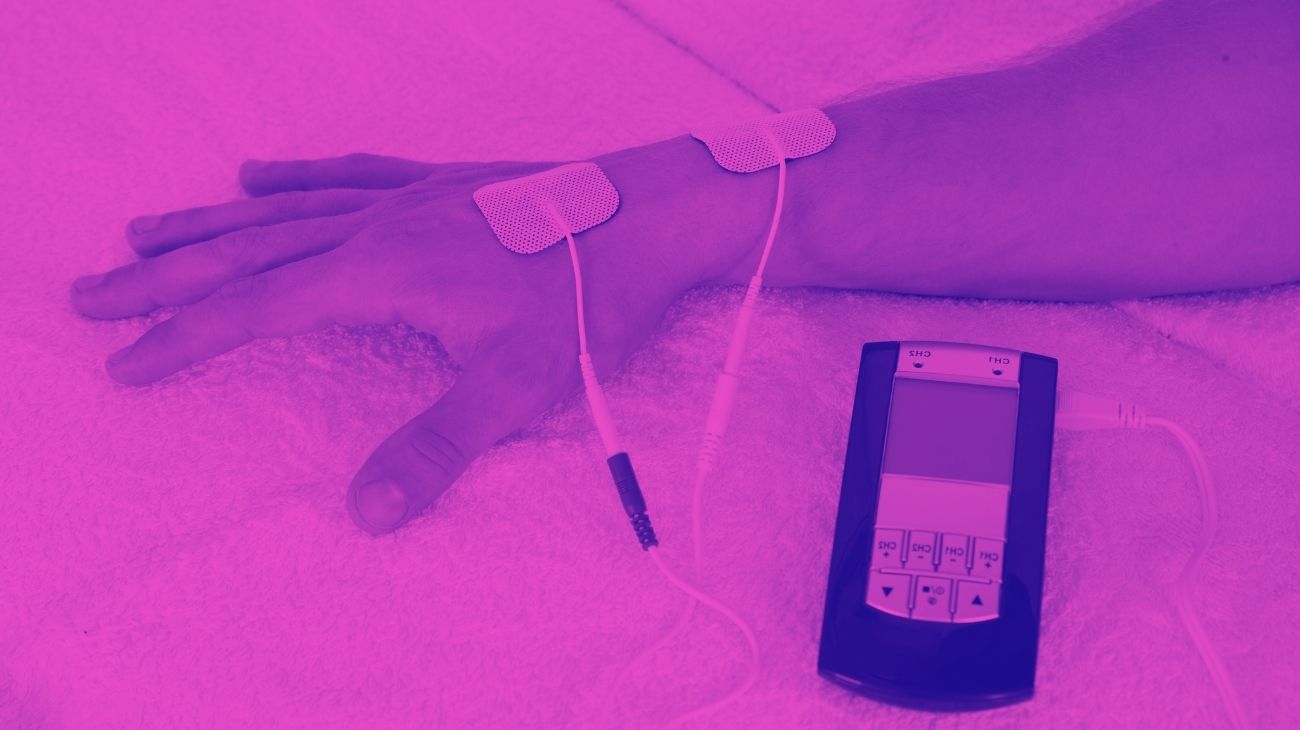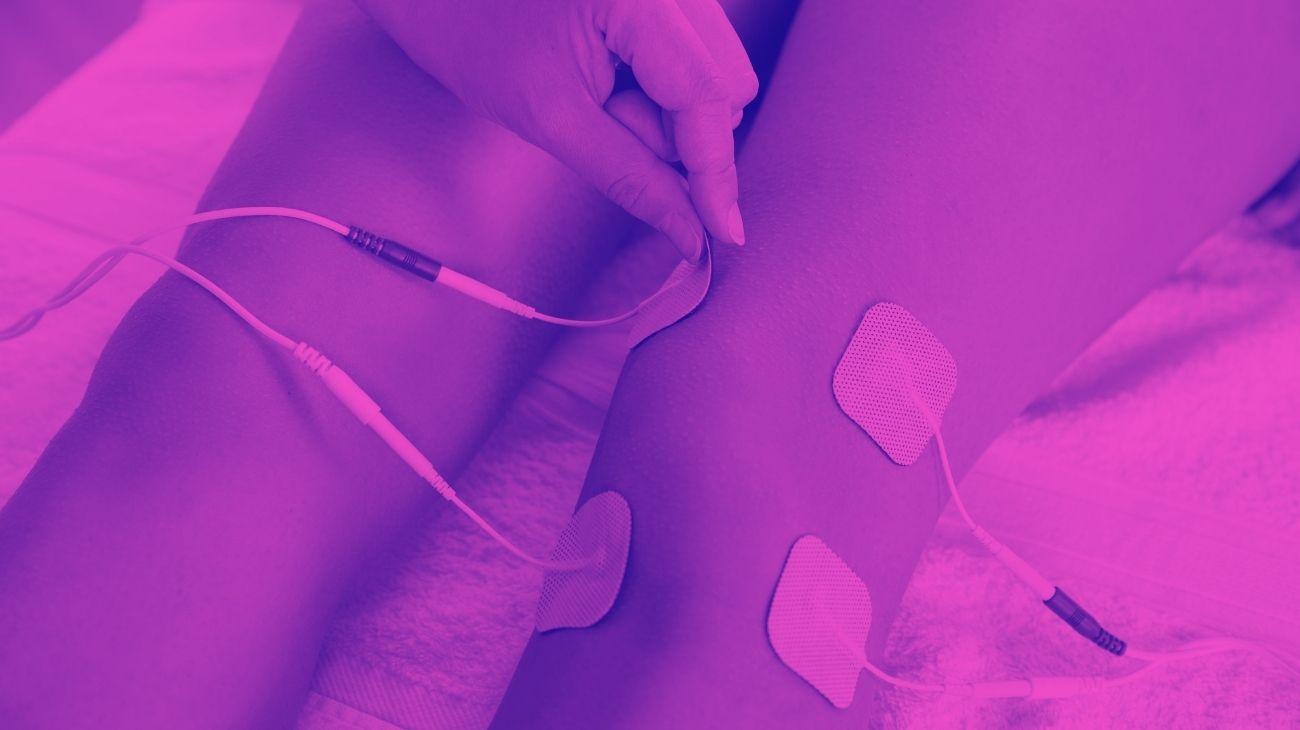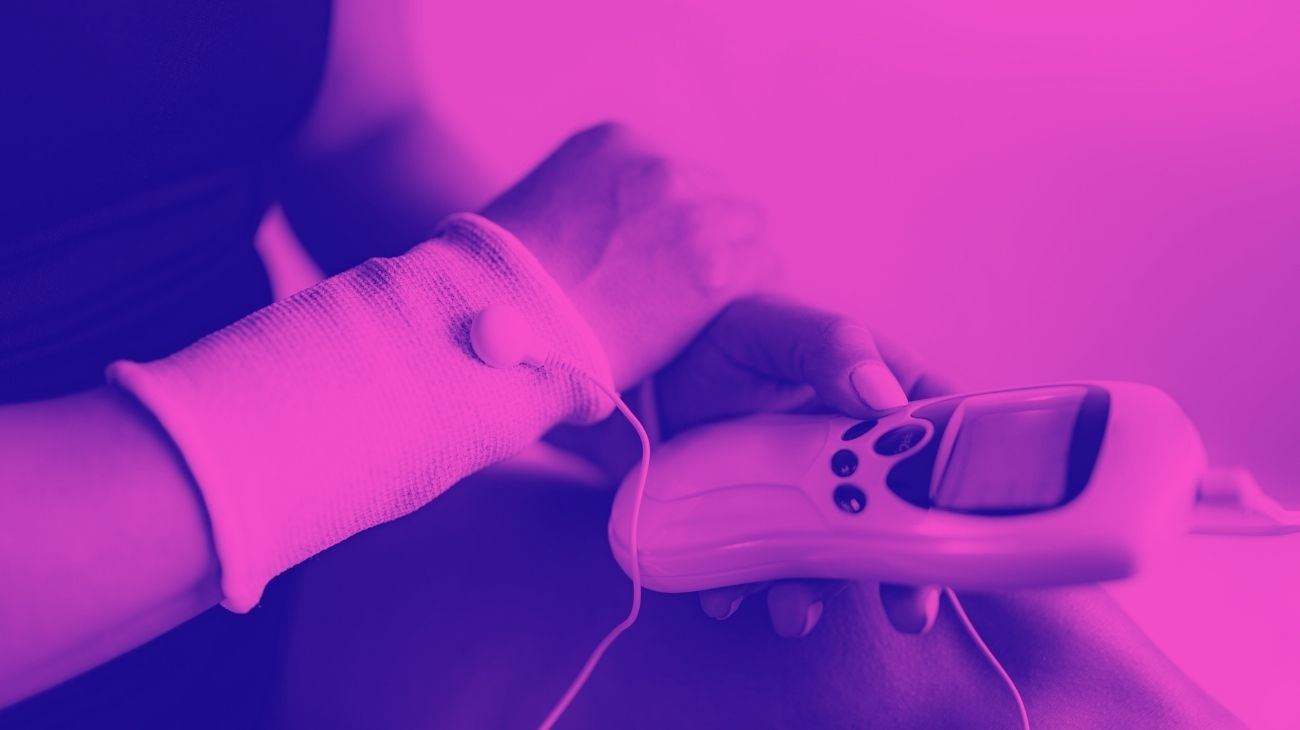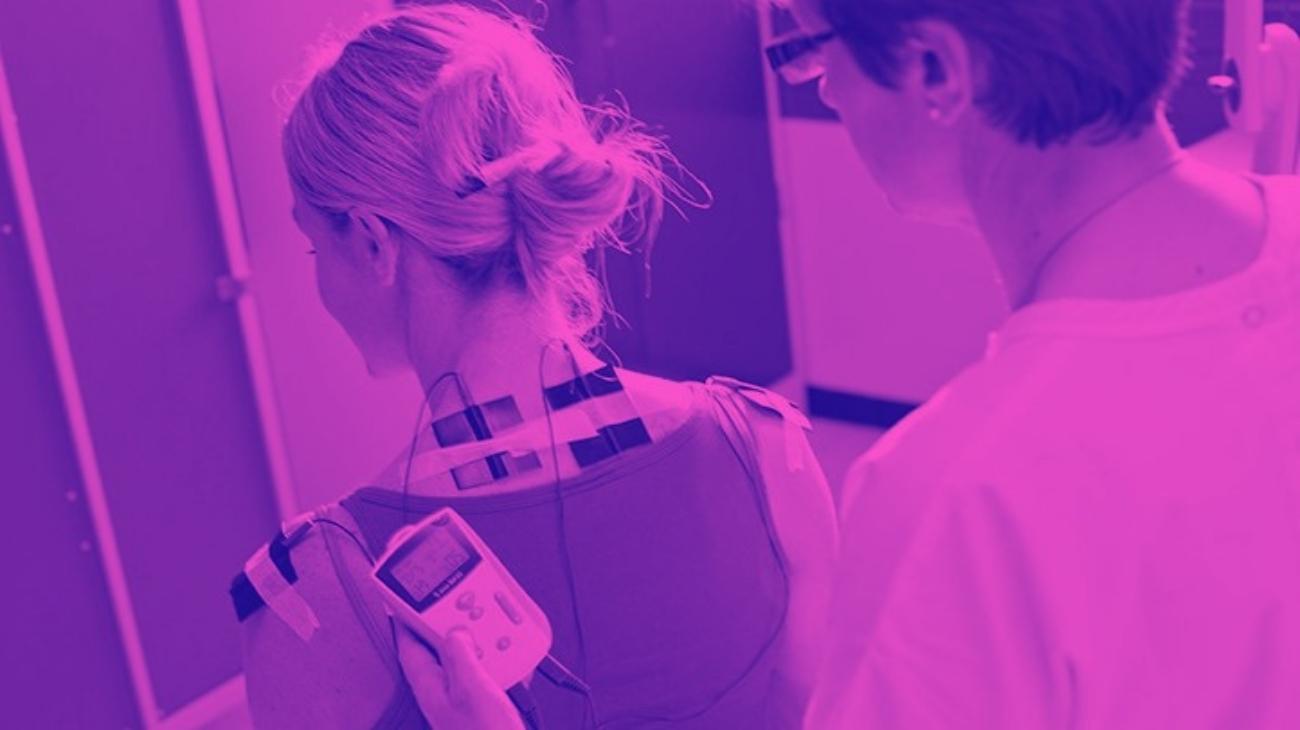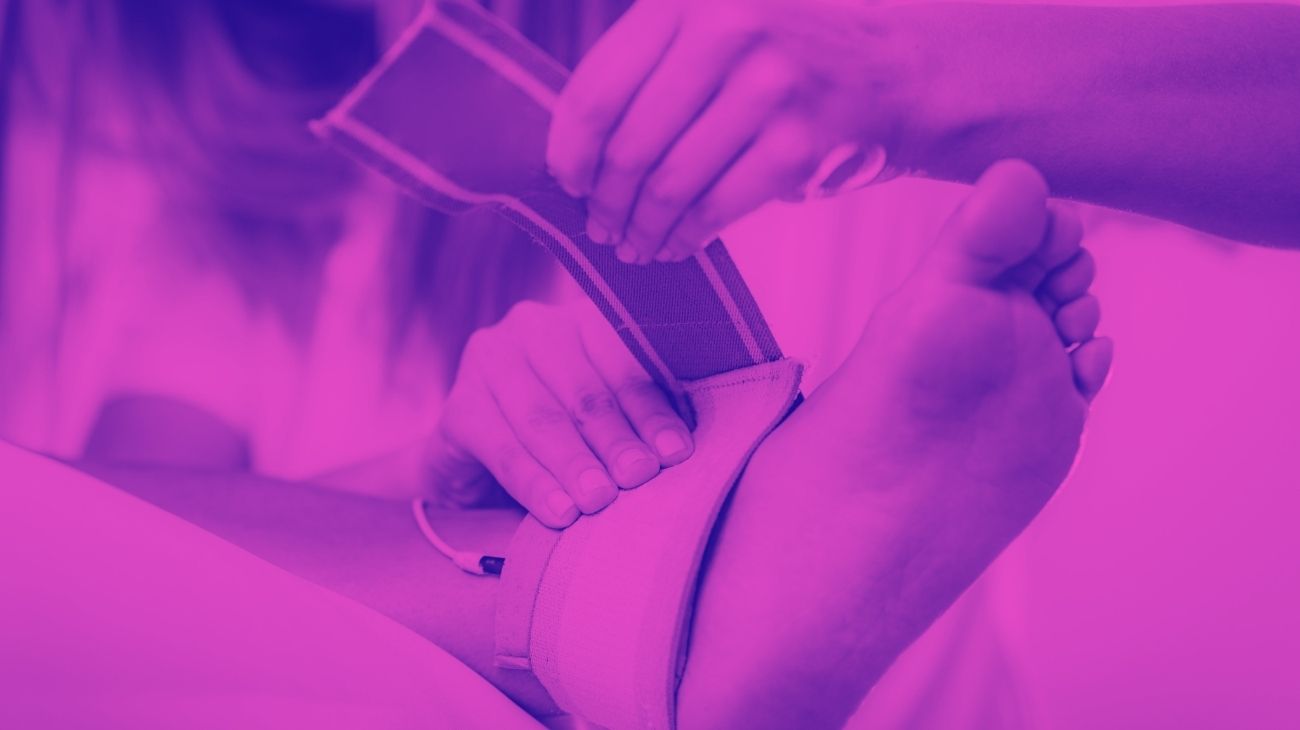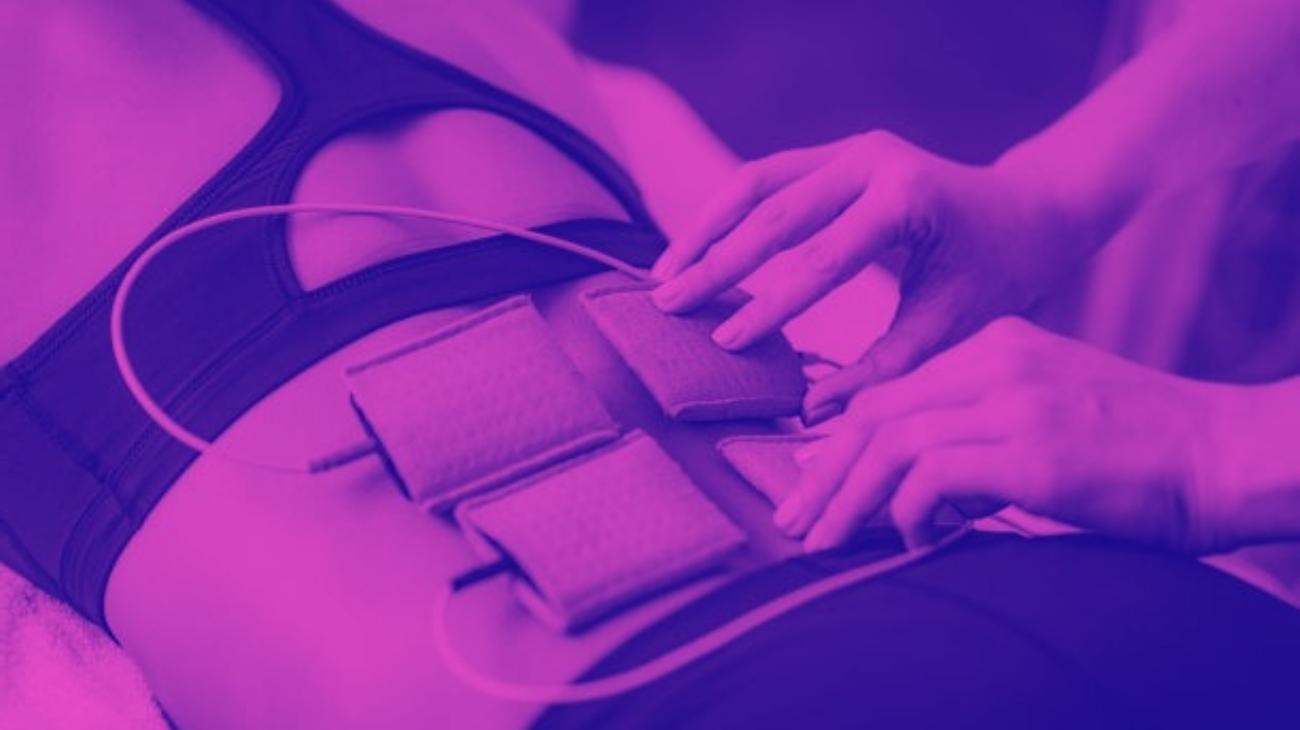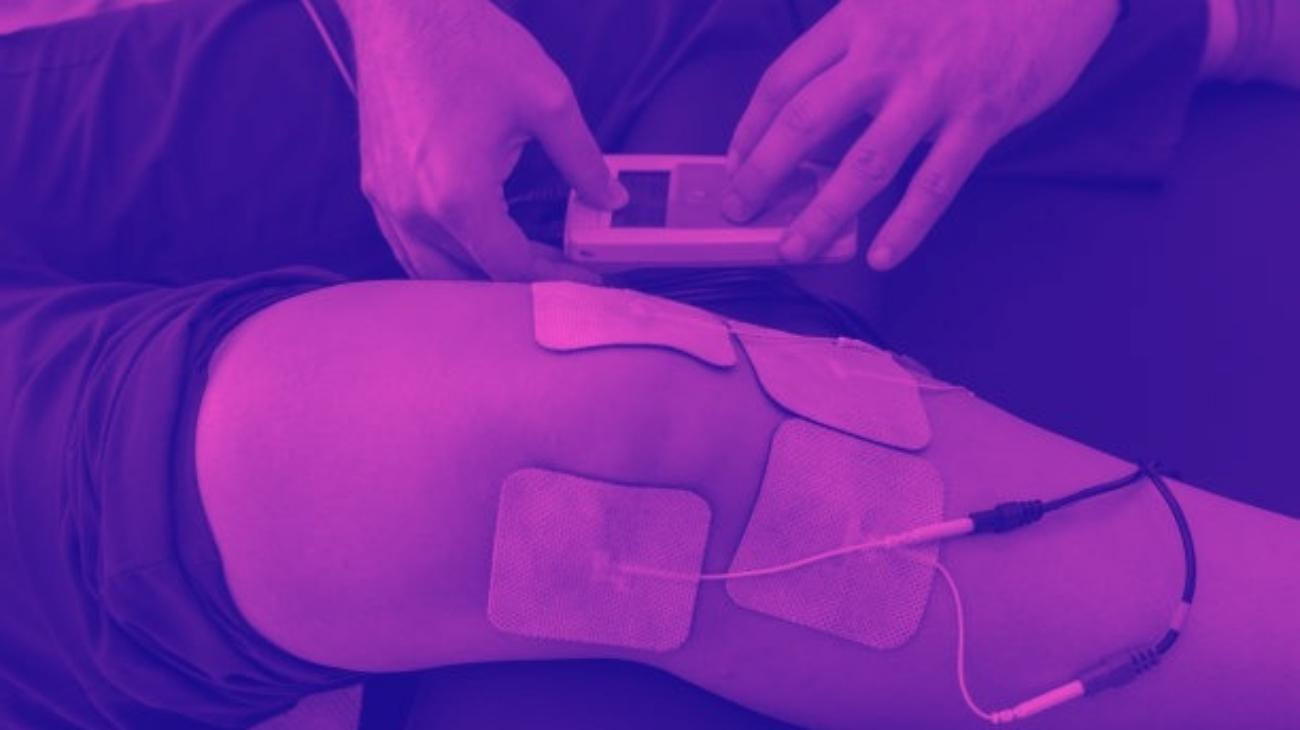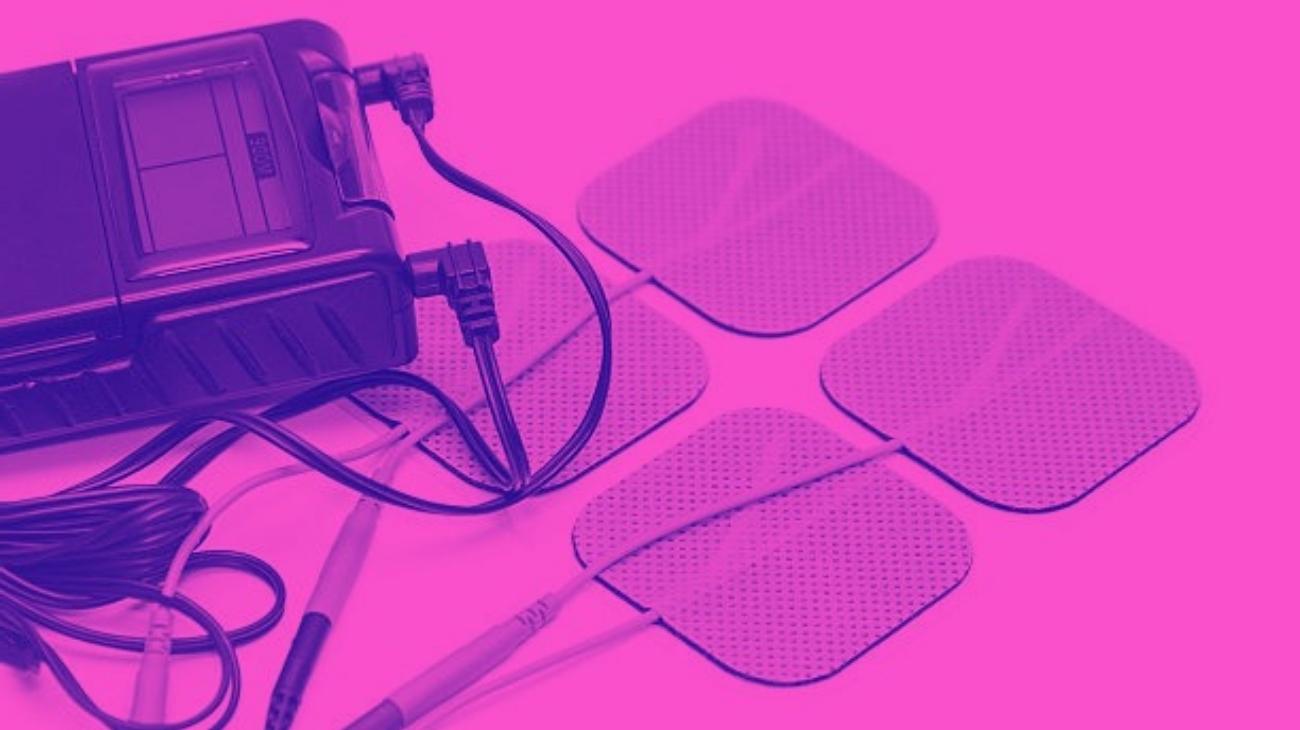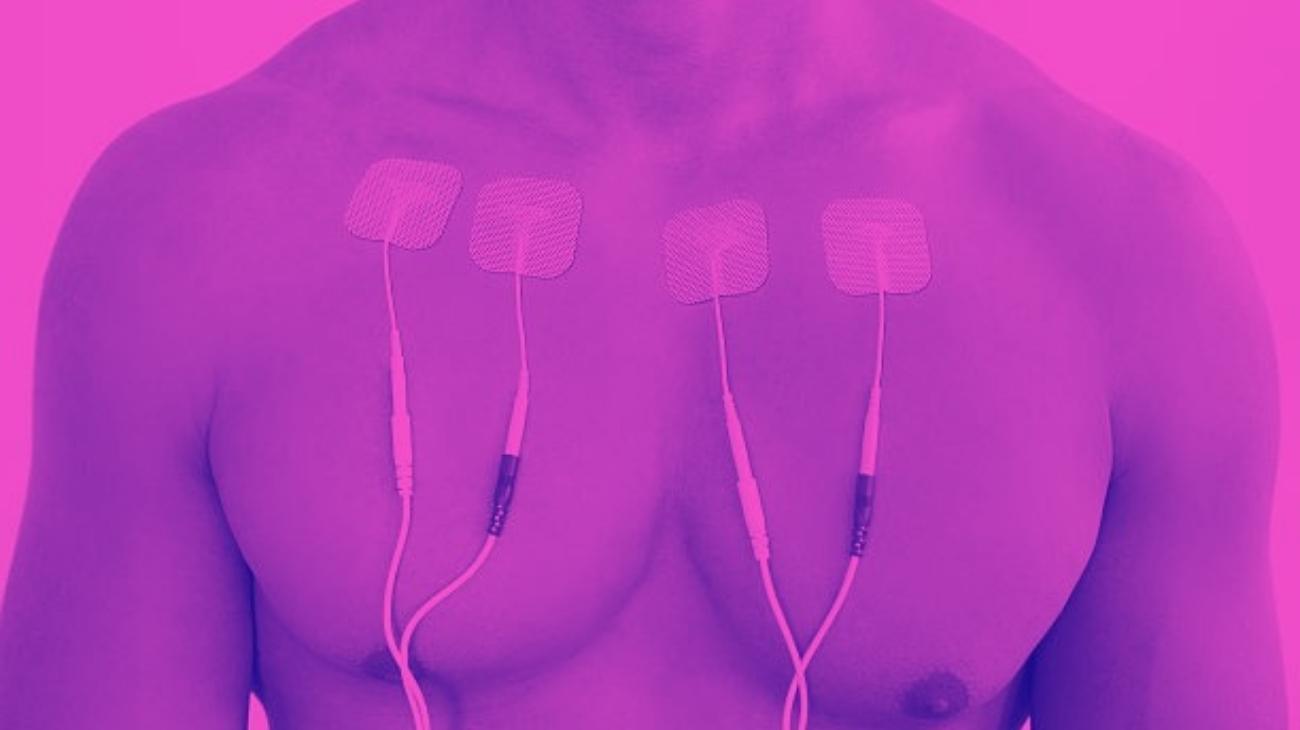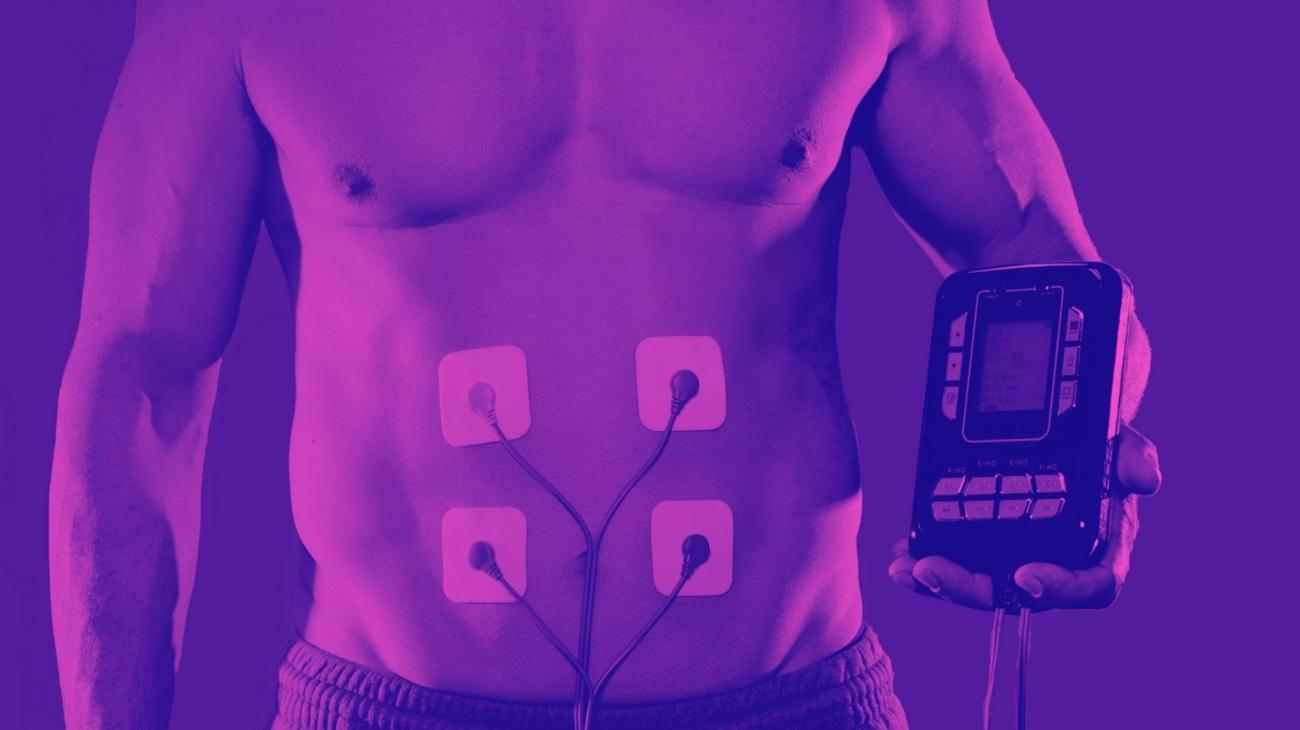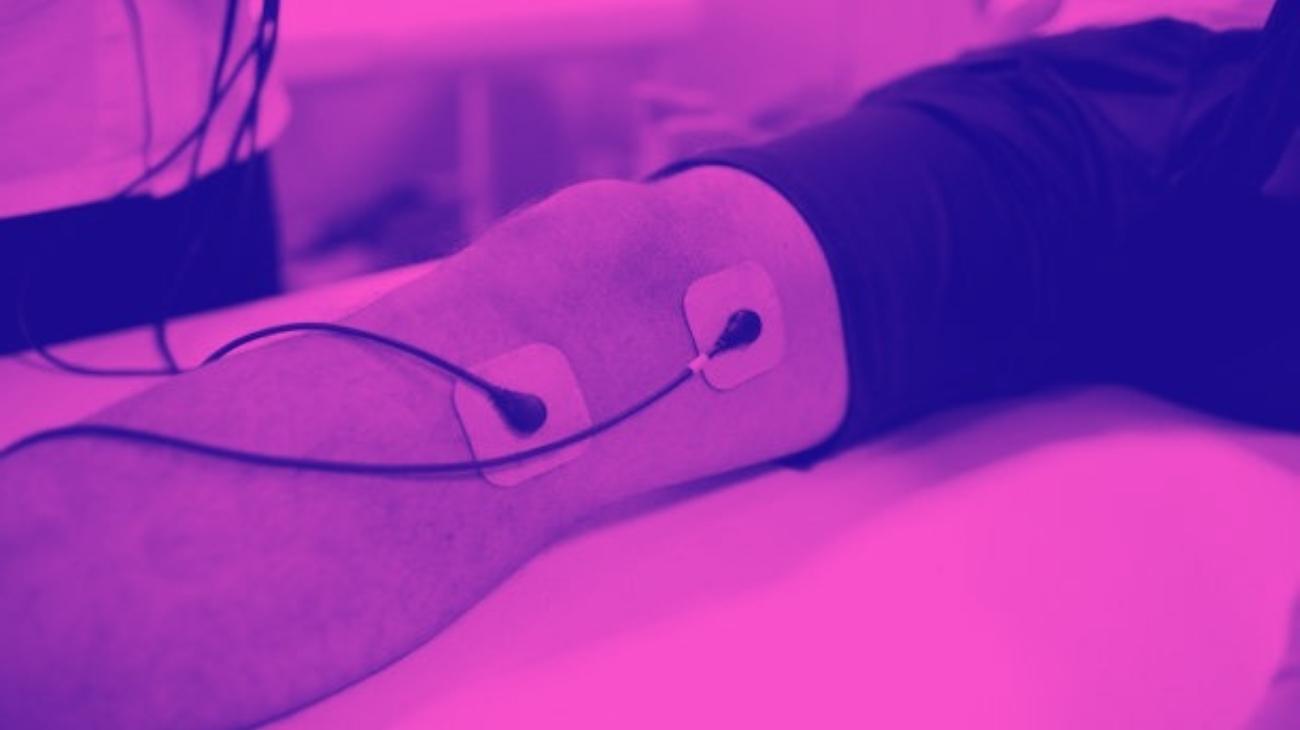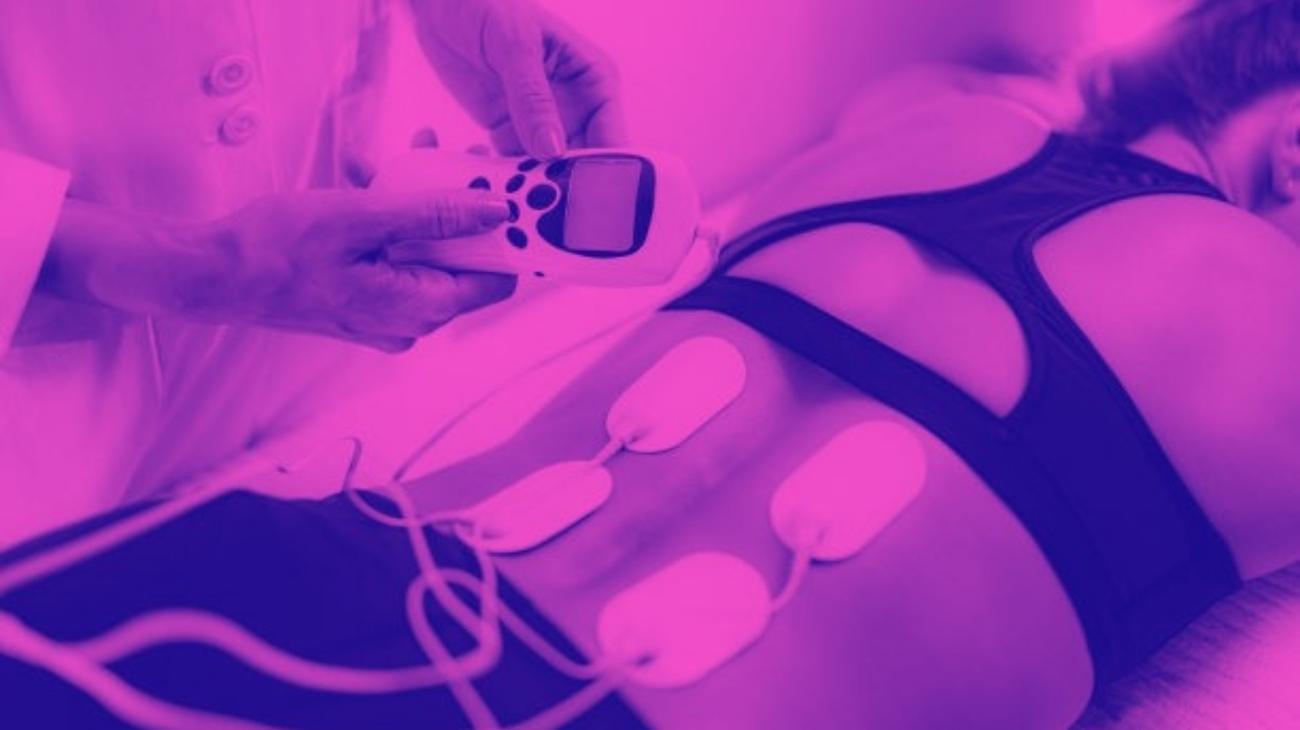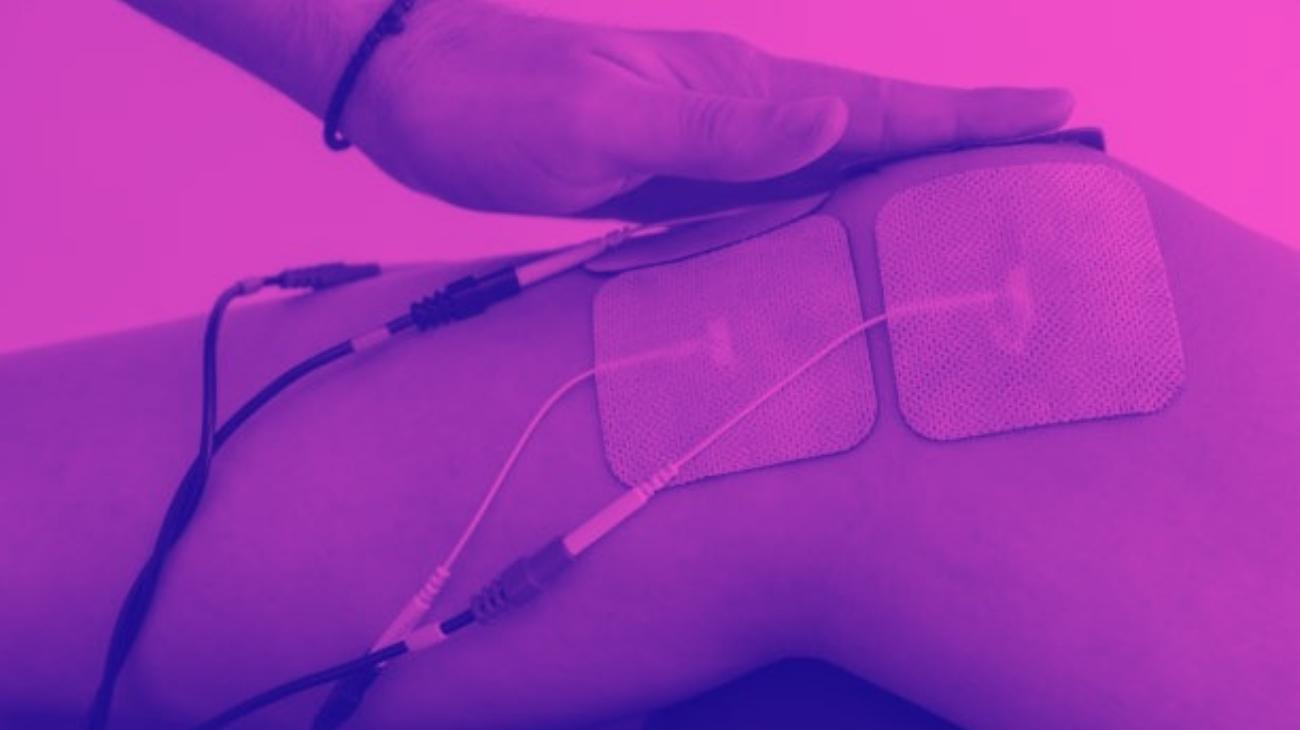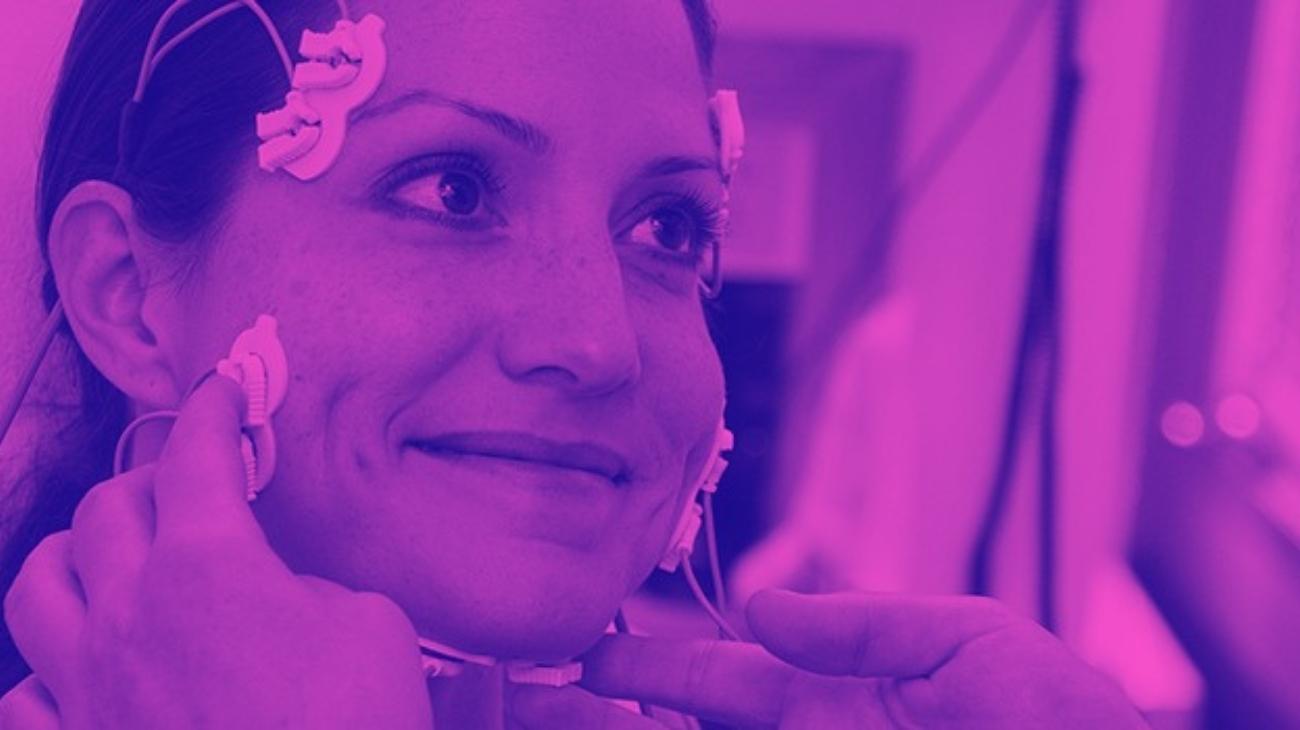- How to use TENS machines to relieve pinched nerve pain?
- Best TENS units to treat nerve damage
- How to use EMS to strengthen muscles and prevent nerve damage?
- Best EMS machines to avoid nerve impingement
- Video: How to place the electrodes pads for nerve pain?
- More types of EMS electrostimulators and TENS machines you should know about
- What is nerve damage and what are the causes?
- What are the most common types of nerve damage?
- Differences between TENS and EMS: Which is better for treating damaged nerves?
- Contraindications in the use of electrodes and electrotherapy
Nerves are not as strong as bones nor as dense as muscles, but without them, neither of the latter two would be able to move freely. That is why when there are injuries or pathologies that involve them, the patient's quality of life is tremendously deteriorated.
Electrotherapy, especially in its TENS modality, can be an alternative to drugs to alleviate nerve damage without altering the chemical composition of the body with drugs that can be counterproductive in the long term. That is why today we will teach you how to use it.
How to use TENS machines to relieve pinched nerve pain?
We will start by showing you how to use a TENS units to relieve pain generated by pinched nerves, or even tremors and weakness generated by degenerative nerve conditions.
Where to place the electrodes?
To relieve nerve pain or reduce tremors, it is important to locate the area of pain precisely, and to know where it originates, since the effectiveness of the therapy will depend to a great extent on this. Once this is done, what should be done is to "enclose" this area in the middle of two pads, or even in a quadrant in case we have 4 of them in our device.
Which current to use?
In general, TENS devices have several programs that automatically adjust the frequency for each type of ailment or objective, with programs for muscle damage, arthrosis and neuropathies. However, this may not be your case and you may have to adjust the frequencies manually. In this case, take into account the following guide:
- Frequencies between 2HZ and 4Hz: endorphin release, relaxation and pain relief.
- Frequency between 20Hz and 70Hz: nerve rehabilitation, reduction of tremors and muscle weakness.
- Frequency between 80Hz and 100Hz: relief of severe pain, chronic pain in muscles and joints.
- Frequencies of 100Hz and above: as indicated by the physician.
Best TENS units to treat nerve damage
Below we share with you a list of the best TENS units you can find on the market to help you recover from your nerve damage without any problems.
- Type: TENS
- Channels: Dual
- Modes/Programs: 30 Programs
- Intensity: 99 Levels
- Wireless: Yes
- Heat Therapy: No
- Battery: Rechargeable Lithium (up to 12 hours)
- Electrodes: 16 Pads
- Display: Digital
- Size: 839 gr
- Reduces pain symptoms
- Includes carrying bag
- Includes user manual
- Rechargeable battery
- Accelerates recovery from sports injuries
- Does not specify measurements
- Not suitable for muscle hypertrophy
- Does not include touch screen
This electrostimulation unit is completely digital for an effective and reliable treatment. It has an LCD display and a user-friendly system that allows you to set the functions in seconds. In addition, the purchase includes 16 reusable electrodes of high quality and for all budgets.
- Type: TENS
- Channels: Dual
- Modes/Programs: 16 Modes
- Intensity: 20 Levels
- Wireless: Yes
- Heat Therapy: No
- Battery: Rechargeable Lithium (up to 10 hours)
- Electrodes: 8 Pads
- Display: Digital
- Size: Not specified
- Improves joint mobility
- Carrying bag included
- Rechargeable battery
- Includes user manual
- Reduces pain symptoms
- Not suitable for muscle hypertrophy
- Does not specify measurements and weight
- Does not include touch screen
The backlit LCD digital display makes the screen clear and easy to read. Supplied with 8 high quality TENS electrode pads. Recharges via computer (USB cable included). Comes with detailed instructions and a TENS user manual containing guidelines for applying the electrodes to the TENS unit. Lightweight and robust.
Beurer - Digital dual channel TENS/EMS device with heat therapy, 70 programs and 50 intensity levels
- Type: Combo
- Channels: Dual
- Modes/Programs: 70 Programs
- Intensity: 50 Levels
- Wireless: Yes
- Heat Therapy: Yes
- Battery: Rechargeable Lithium
- Electrodes: 4 Pads
- Display: Digital
- Size: Not specified
- With heat therapy
- Incl. user manual
- TENS+EMS combo
- Accelerates recovery from sports injuries
- Reduces pain symptoms
- No battery life specified
- Transport bag not included
- Does not specify dimensions and weight
This powerful electrostimulation equipment offers immediate relief for almost any type of ailment using stimulation methods that stimulate the production of natural pain relieving agents within the body. It also works as an effective methods to accelerate muscle growth and regeneration, while combining with heat therapy to provide one of the most complete treatments you will find.
- Type: Combo
- Channels: Dual
- Modes/Programs: 16 Modes
- Intensity: 20 Levels
- Wireless: Yes
- Heat Therapy: No
- Battery: Rechargeable Lithium
- Electrodes: 8 Pads
- Display: Digital
- Size: Not specified
- TENS+EMS combo
- Reduces pain symptoms
- Includes user manual
- Rechargeable battery
- Portable and small size
- No size and weight specified
- Battery life not specified
- No touch screen included
It has 16 programmed modes and 20 intensity levels, ranging from acupuncture and shiatsu to vibration and tuina, among many other modalities designed to treat different types of pain, relieve stress and increase the production of endorphins to relieve pain in a completely natural way.
- Type: Combo
- Channels: Dual
- Modes/Programs: 25 Modes
- Intensity: 50 Levels
- Wireless: Yes
- Heat Therapy: No
- Battery: Rechargeable Lithium (up to 10 hours)
- Electrodes: 10 Pads
- Display: Digital
- Size: Not specified
- Rechargeable battery
- Prevents muscle atrophy
- Portable and small size
- Improves joint mobility
- TENS+EMS Combo
- Does not specify dimensions and weight
- Transport bag not included
- Touch screen not included
The 50-level intensity allows you to explore for another unique experience, while the preset timer can be easily adjusted from 5 to 60 minutes. Safe enough to relax at home or in the office. Hydrogel with multi-layer technology, reusable 70 to 110 times when used correctly. Built-in rechargeable lithium battery, 10 hours continuous use after a full charge with USB cable.
How to use EMS to strengthen muscles and prevent nerve damage?
EMS focuses on strengthening muscles, but there is a way to use the muscle contraction it generates to provide a gentle muscle massage that releases tension from the nerves, avoiding possible pain from injuries such as nerve impingement to name a few.
Where to place the electrodes?
The placement of the electrodes pads should be identical to what you would do when you want to train a muscle. In this case, the important thing will be the intensity of the current to be used.
What intensity to use?
The intensity is the most important thing in this case, since what we need is a high frequency current but less intense than normal, so that a slight muscular contraction is generated, not as intense as the one we would look for to achieve hypertrophy for example.
As in the case of TENS devices, EMS machines have various training programs that automatically adjust the intensity of the current, programs such as "Warm-up", "Massage", "Toning" or "Hypertrophy" can be present in your electro stimulator.
Best EMS machines to avoid nerve impingement
Here are the best EMS stimulators that you can use to get a relaxing massage that releases tension from your nervous system.
- Type: Combo
- Channels: 4
- Modes/Programs: 10 Programs
- Intensity: Not specified
- Wireless: No
- Heat Therapy: No
- Battery: Rechargeable
- Electrodes: -
- Display: Digital
- Size: Not specified
- Accelerates recovery from sports injuries
- TENS+EMS Combo
- Portable and small size
- Rechargeable battery
- Includes user manual
- Size and weight not specified
- No intensity levels specified
- Separate electrodes
In addition, it has a TENS massage mode with which you can treat acute and chronic ailments caused by various conditions. It has 10 modes of use: 1 for pain treatment, 1 for physical rehabilitation, and 8 physical training programs. All these features make it the number one choice for increasing physical performance in a completely natural way.
- Type: Combo
- Channels: Dual
- Modes/Programs: 55 Programs
- Intensity: Not specified
- Wireless: Yes
- Heat Therapy: No
- Battery: Rechargeable Lithium
- Electrodes: 4 Pads
- Display: Digital
- Size: 80 gr
- Portable and small size
- TENS+EMS combo
- Rechargeable battery
- Includes user manual
- Includes carrying bag
- No measurements specified
- Battery life not specified
- No intensity levels specified
It contains 28 preset programs and 8 manual programs that you can configure to suit your needs. This feature gives you fantastic coverage for natural pain relief of all kinds, and it has a powerful memory function that saves the last massage program that was used, so you can access it immediately.
- Type: Combo
- Channels: Dual
- Modes/Programs: Not specified
- Intensity: Not specified
- Wireless: Yes
- Heat Therapy: No
- Battery: Rechargeable Lithium
- Electrodes: 16 Pads
- Display: Digital
- Size: Not specified
- TENS+EMS Combo
- Rechargeable battery
- Includes carrying bag
- Includes user manual
- Portable and small size
- Does not specify dimensions and weight
- No intensity levels specified
- Battery life not specified
It is incredibly easy to use, and features an innovative dual-channel function that allows you to simultaneously treat different parts of the body with different settings, along with a memory function that stores the last massage program used. Its ergonomic and portable design allows you to take it anywhere and use it very discreetly.
- Type: Combo
- Channels: Dual
- Modes/Programs: 24 Modes
- Intensity: Not specified
- Wireless: Yes
- Heat Therapy: No
- Battery: Rechargeable Lithium (up to 20 hours)
- Electrodes: 10 Pads
- Display: Digital
- Size: Not specified
- Includes user manual
- Reduces pain symptoms
- Prevents muscle atrophy
- Portable and small size
- TENS+EMS Combo
- Does not specify size and weight
- No intensity levels specified
- No heat therapy
Additionally, it has a TENS electrotherapy current function with which you will be able to treat most muscle, nerve and joint ailments instantly. Both technologies are combined in a compact device with 24 modes of use that will adapt to your needs.
- Type: Combo
- Channels: -
- Modes/Programs: 15 Programmes
- Intensity: Not specified
- Wireless: Yes
- Heat Therapy: No
- Battery: Rechargeable Lithium
- Electrodes: 2 Pads
- Display: No display
- Size: Not specified
- TENS+EMS Combo
- Control from the mobile app
- Rechargeable battery
- Includes user manual
- Reduces pain symptoms
- No battery life specified
- No intensity levels specified
- Does not specify dimensions and weight
It has more than 10 preset programmes designed for muscle stimulation, improved recovery and pain relief, thanks to its revolutionary Smart TENS stimulation technology. The package includes a pre-loaded device, 2 sets of pads, 1 set of cables, 1 USB charger and a portable case.
Video: How to place the electrodes pads for nerve pain?
Electrodes for arms
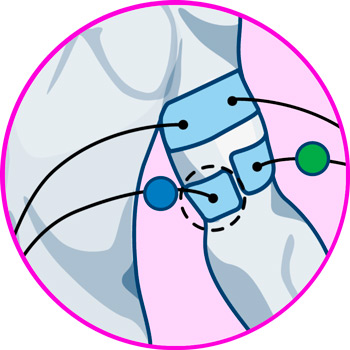
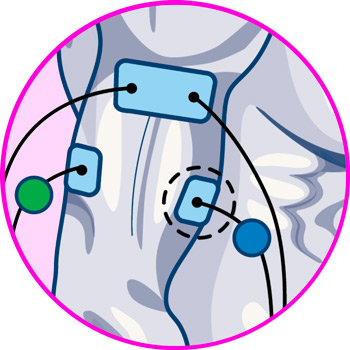
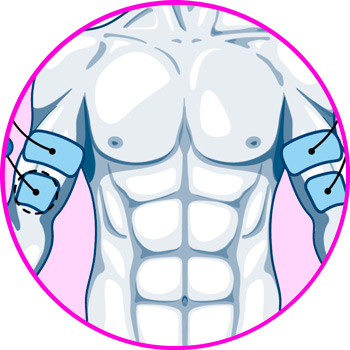
Electrodes for forearms
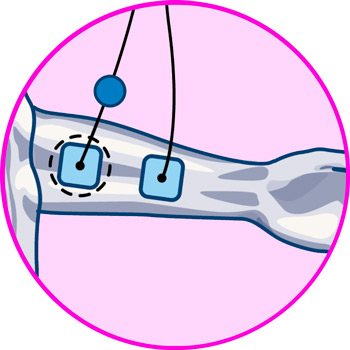

Electrodes for back
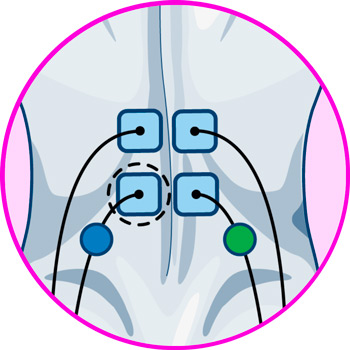
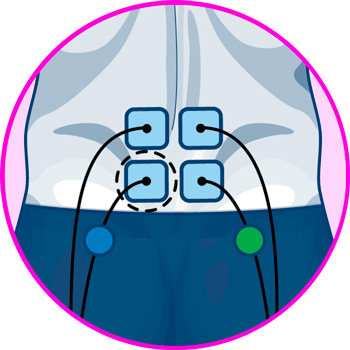
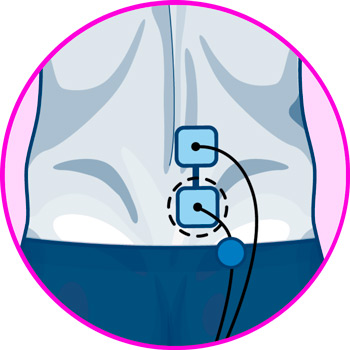
Electrodes for legs
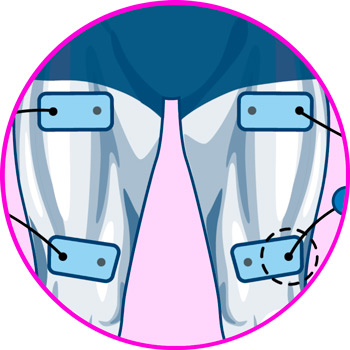
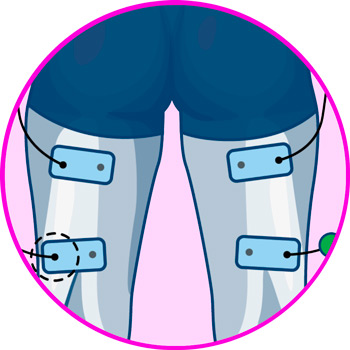
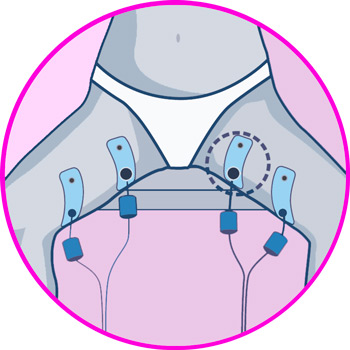
Electrodes for calf
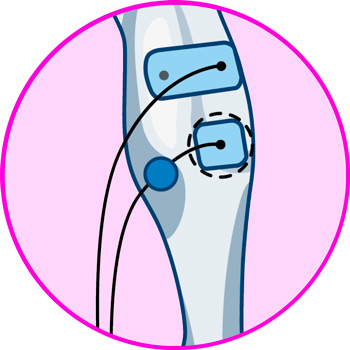
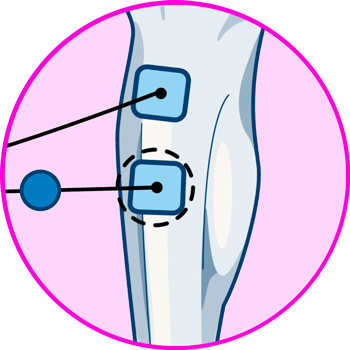

More types of EMS electrostimulators and TENS machines you should know about
What is nerve damage and what are the causes?
It refers to the damage that a nerve can receive because it has deteriorated over the years. Nerve damage can cause a nerve to atrophy, compressing or stretching in such a way that the electrical signals sent to the brain do not flow normally. But it can also generate a wear that makes these currents are not supported by the tissue, as when the insulation of a cable wears out and lets the voltage escape.
Among the main causes of nerve damage we can highlight the following:
- Hypertension: an increase in the amount of blood flowing through the arteries can cause damage to the arteries, nerves and various vital organs. High blood pressure is one of the five most common causes of nerve damage in the world.
- Recurrent injuries: these can be muscular, articular or even bone. The truth is that when we are injured, the nerve tissue that runs through the injured area becomes inflamed as well as the other tissues, which is why the characteristic pain of any injury is generated, since muscles and joints are covered by thousands of nerve branches that if constantly damaged can cause chronic and irreparable neuropathies.
- Cardiac conditions: as with hypertension, a failure in blood pumping due to cardiac diseases such as arrhythmia, is potentially harmful both for the nerves and for the other tissues and organs of the body.
- Diabetes: excess glucose in the blood changes its density and fluid composition, which gradually causes damage to all body tissues, including nerves.
- Brain damage: whether due to a tumor, a stroke or a car accident, any damage to the brain will directly affect the entire nervous system.
- Lifestyle: sedentary lifestyle, night life and addictions, especially to chemical drugs, have a negative impact on the nervous system that will wear it down over the years, until it generates some chronic and irreparable pathology.
What are the most common types of nerve damage?
The human body has between 31 and 33 pairs of nerves that originate in the spinal cord and extend throughout the body, joining bones, muscles and ligaments thanks to the fascia. This means that the number of diseases caused by damage to these nerves is quite large.
Below you will learn about the most common ones affecting society:
- Nerve impingement: occurs when a nerve shortens or contracts in a section of it, generating a tension that will cause intense pain.
- Nerve strain: occurs when a nerve is stretched too much, and maintains a longer than normal size for a considerable period of time, which generates weakness in this and the surrounding muscles. A common cause of this type of injury is pregnancy or muscle tears.
- Nerve percussion: occurs when a sharp object pierces the nerve, which is common in total fractures of large bones such as the femur, humerus or tibia.
- Nerve laceration: occurs when a nerve is cut with a sharp object, as may happen when receiving a stab wound, or by domestic accidents with a knife or some other lethal object of this style.
There are other classifications such as nerve freezing or damage from drug or heavy metal poisoning found in junk food and processed foods. Now, within each of these classifications there are a large number of injuries such as the following:
- Neuromas.
- Diabetic neuralgia.
- Peripheral neuropathy.
- Carpal tunnel syndrome.
- Tarsal tunnel syndrome.
Differences between TENS and EMS: Which is better for treating damaged nerves?
To alleviate some of the ailments and symptoms generated by nerve damage, we can count on electrotherapy. This has two modalities known as TENS and EMS, which use currents to achieve a physiological response of the organism.
The TENS current or transcutaneous electrical nerve stimulation uses more intense currents, but these have a much lower frequency, which makes it enter through the skin and reach the nerve endings. It can be used to stimulate the nerves, which is very useful to rehabilitate them after a muscle or nerve injury, although its main function is to increase the pain threshold that a nerve can tolerate.
On the other hand, EMS or electrical muscle stimulation uses currents of lower intensity but with a higher frequency, which go through the skin and reach the muscle directly to achieve muscle contraction. At first glance it seems that it does not have much to do for people with nerve damage, but the reality is much broader.
The main difference between both therapies is mainly focused on the user experience; while TENS generates a tingling and tingling in the skin, EMS is more "aggressive" by generating a direct muscle contraction. In addition, there is also the range of work of each; TENS focuses on the nerves, while EMS focuses on the muscles.
Although it may not seem like it, both can help you both relieve and prevent nerve damage. While you may think that only TENS has this quality, EMS can also do this because by working on the muscle tissue, it can be of great help in releasing tension on the nerves and preventing future neuropathies.











